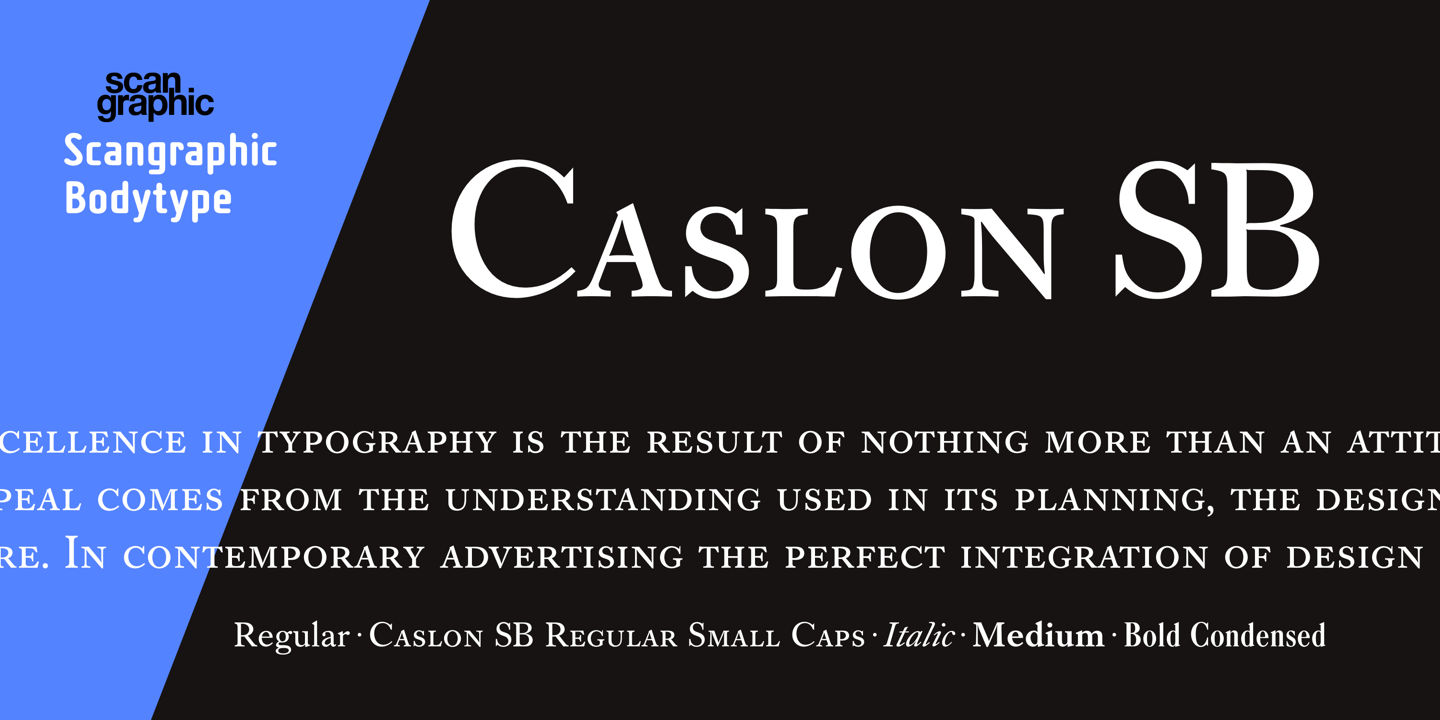

I defined the 24 pt as my zero point and this step converted the specimen poster into a modern typographic scale (typographic units were not widely standardized at that time yet). The Double Pica Roman served as scale reference for 24 pt. The first step was to determine the size of the actual sheet. I kept all the original spelling mistakes and only ‘fixed’ the grid, which suffered from the paper being physically folded, and the camera distortion (apparently the specimen sheets were digitized using a Canon 5D). So, I kept the original proportions and layout. I wanted to stay as close to the original specimen as possible. This specimen book is available on and can be downloaded in a decent resolution. In 1785 William Caslon III (1754 – 1833) published a specimen book that features the complete family of Caslon fonts. The son and grandson expanded on the existing work and created more cuts and sizes of the grandfather’s fonts. Three years before the elder’s death, they published a specimen book in 1763, which got reprinted several times over the course of more than three decades. William Caslon II (1720 – 1778) learned from his father and continued the business. hosts a digitization of three copies of the very same specimen sheet at a very high resolution and at an acceptable quality. There is one version available on Wikipedia, which comes at an acceptable resolution.

Caslon, a person who, though not bred to the art of letter-founding, has, by dint of genius, arrived at an excellency in it unknown hitherto in England, and which even surpasses anything of the kind done in Holland or elsewhere.’ Talbot Baines Reed A History of the Old English Letter Foundries The sheet was included as an inset plate in the second edition of Ephraim Chambers’ Cyclopædia in 1738, with the following flattering notice: “The above were all cast in the foundery of Mr. The three founts referred to as not the product of Caslon’s hand, were the Canon Roman, from Andrews’ foundry, the English Syriac, which is from the matrices of the Polyglot and the Pica Samaritan, which was cut by a Dutchman named Dummers.įame appears to have followed rapidly on the appearance of this Specimen. Of the excellence of the performance it is sufficient to say that the Specimen placed Caslon absolutely without rival at the head of his profession ‘and,’ as Nichols says, ‘for clearness and uniformity, for the use of the reader and student, it is doubtful whether it has been exceeded by any subsequent production.’ Of these, all, with three exceptions, are Caslon’s own handiwork, and represent the untiring industry of fourteen years. Greek: English, Pica, Long Primer, Brevier.Hebrew: English, English with points, Brevier.Gothic, Coptic, Armenian, Samaritan: Pica of each.Roman and Italic: French Canon, 2-line Great Primer, 2-line English, Double Pica, Great Primer, English, Pica, Small Pica (2), Long Primer (2), Brevier, Nonpareil, and Pearl.Titling: 5-line Pica, 4-line Pica, 2-line Great Primer, 2-line English, 2-line Pica, 2-line Long Primer, 2-line Brevier.The sheet is arranged in four columns, and displays 38 fonts: It is a well-documented historic artefact that Talbot Baines Reed (1887) described as follows: William Caslon I (1692 – 1766) reached the pinnacle of his creation when he published his specimen sheet in 1734 to advertise his foundry.
#Modern caslon font pdf
You can find the PDF version at the bottom of this post. Therefore, I made it my little side project to recreate the specimen sheet in Adobe Illustrator for high quality printing.

And there is also the problem with optical distortion from the digitization process, as well as stains and inconsistent contrast. However, the resolution of the source file is too low for serious printing. I thought it would make a very decent and highly decorative poster. A Specimen by William Caslon, Letter-founder in Chiswell Street, LondonĪ while ago, I saw the famous specimen sheet that William Caslon distributed in 1734 on the subreddit for typography. A piece of typographic history recreated.Ī recreated version of 1734.


 0 kommentar(er)
0 kommentar(er)
